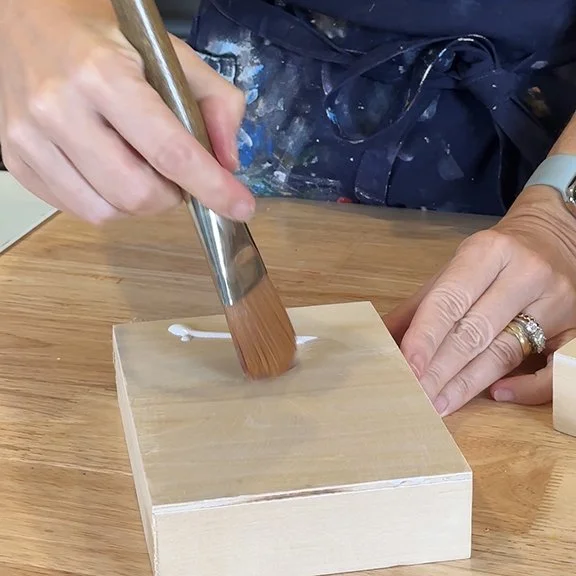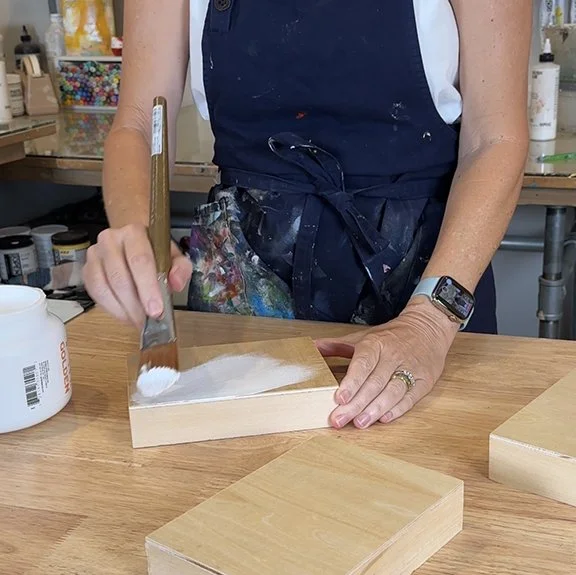How to Prep Wood Panels for Acrylic
I love the feeling of a paint brush and silicone scraper on top of wood panel. There are a lot of different effects I can create on wood that do not happen on canvas. You can save some money in the art supply store if you purchase the wood panels “unprepared”. Here is how I ensure a beautiful painting surface every time.*
Start preparing your wood panel with a coat of gloss medium or GAC100. This layer of product will prevent “SID” (Support Induced Discoloration). SID happens when impurities in the wood panel seep into the paint causing it to yellow or discolor as it dries. The color change occurs as the paint is drying. For a long time, Golden Paint recommended a coating of GAC100 as a preventative step, but they have changed their recommendation to include Gloss Medium instead. Two coats of the medium are recommended. I prep the entire panel. (It is worth noting that I have always used these wood panels to paint on. Since I purchase the same panels every time I paint, I always know they will be great quality.)
Apply medium to the panel before gesso. Use a soft brush to get a smooth application.
Once dry, add a layer of Gesso. I gesso all of the areas that I will be painting, ensuring as even of a coat as possible to reduce the amount of time I will need to sand the gesso layer once it dries.
Gesso all of the panel where paint will be applied.
Sand the dried gesso. I use this sandpaper. The sanding block made by 3M is comfortable to hold.
Sand each layer of gesso once it dries.
Repeat the process so that you have three layers of dried gesso on the panel. This method will produce a beautiful, smooth surface to paint on.
Preparing wood panels yourself will ensure you always know what kind of surface you will end up with.
Preparing wood panels to accept acrylic paint is a lot of work, but the results are well worth it. I know that you may be thinking that you are just “playing” around with your paint, so these steps are not necessary. However, it never fails, the play may result in a beautiful painting that you may want to hang up forever or sell to an admirer… take the steps to ensure your artwork will stay archival and beautiful for a lifetime.
Before publishing this, I also had a thought that popped into my head. I get a lot of questions about products, and about people trying different materials.. I’ll add that I always stick with the same materials. I also record everything. This way, I always know, start to finish, what I used on any painting. This way, not only can I recreate a similar piece after a few years, but if the materials are ever recalled (or a recommendation changes), I know what I used. To me, that is part of the professionalism I want to be able to offer my collectors. Just my two cents.
*This website uses affiliate links, meaning: at no additional cost to you, I earn a small commission if you click-through and make a purchase. As an Amazon Associate and a Dick Blick Affiliate, I earn from qualifying purchases. I only feature products that I believe in and use myself. Your support means the world to my family and I! Thank you!



